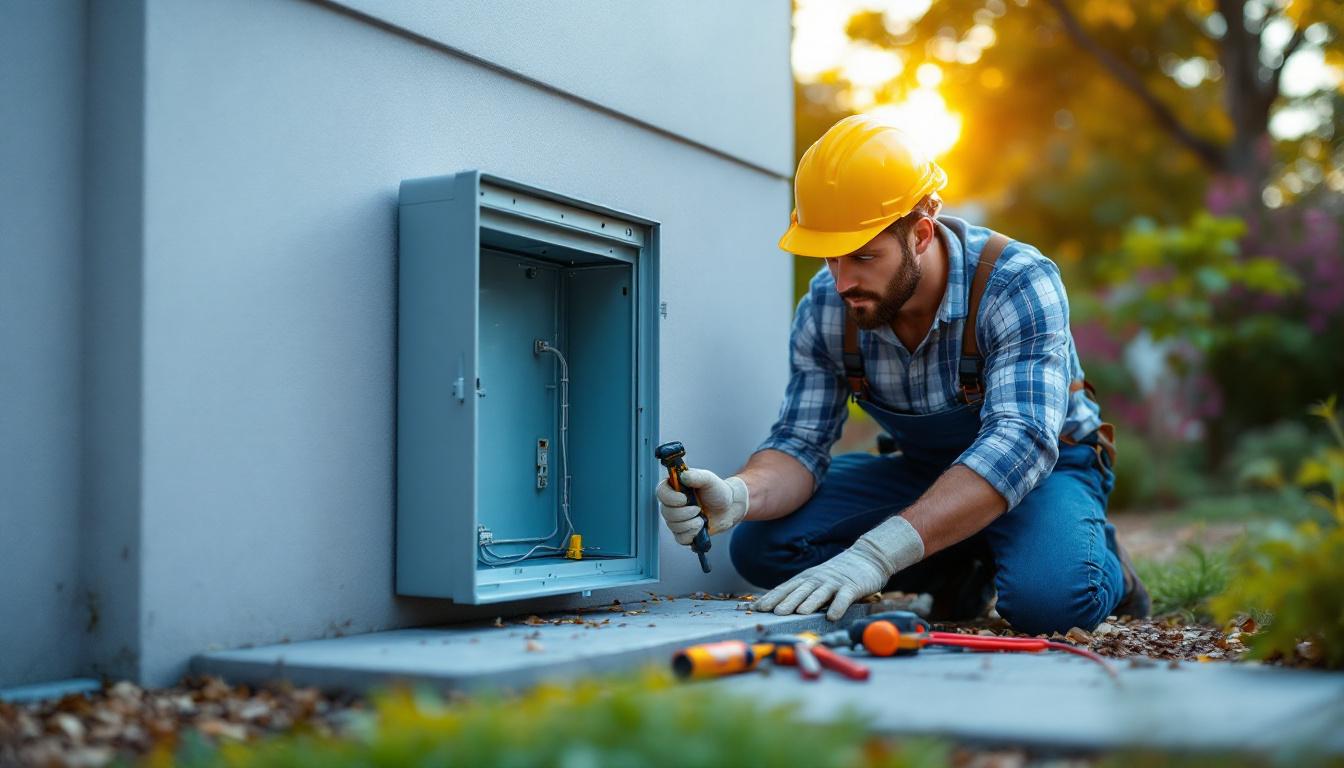
lighting fixtures play a pivotal role in any space, providing both functionality and aesthetic appeal. For lighting contractors, understanding the nuances of painting these fixtures can enhance their service offerings and improve client satisfaction. This article delves into the essential aspects of painting lighting fixtures, including preparation, techniques, and materials, ensuring that contractors are well-equipped to tackle this task.
Painting lighting fixtures is not merely an aesthetic choice; it can significantly impact the overall design and functionality of a space. A well-painted fixture can complement the interior decor, while a poorly executed paint job can detract from it. For contractors, this means that mastering the art of painting fixtures can elevate their work and set them apart from competitors.
One of the primary reasons for painting lighting fixtures is to enhance their visual appeal. Fixtures come in various styles and finishes, and sometimes, a simple coat of paint can transform an outdated or mismatched fixture into a modern design element. For instance, a brass fixture can be painted matte black to fit a contemporary theme, while a white fixture can be given a pop of color to match a playful decor.
Moreover, painting allows for customization, enabling contractors to offer tailored solutions to clients. This personal touch can lead to increased customer satisfaction and repeat business. The ability to match a fixture’s color to the surrounding decor can also create a cohesive look that ties the entire room together, making it feel more intentional and well-designed. Additionally, using different textures and finishes, such as a glossy or satin sheen, can add depth and interest, further enhancing the overall aesthetic of the space.
In addition to aesthetic benefits, painting can also serve a protective function. Many lighting fixtures are made from metals that can corrode or tarnish over time. Applying a high-quality paint can provide a barrier against moisture, dust, and other environmental factors that may lead to deterioration. This protective layer can extend the life of the fixture, making it a worthwhile investment for both contractors and their clients.
Furthermore, the choice of paint can also influence the fixture’s ability to withstand heat generated by the light bulbs. Using heat-resistant paint can prevent peeling and discoloration, ensuring that the fixture remains attractive and functional over time. Additionally, painting can help conceal minor imperfections or scratches that may have occurred during installation or regular use, allowing fixtures to maintain their polished appearance. By prioritizing both aesthetics and protection, contractors can ensure that their lighting fixtures not only look great but also stand the test of time, providing lasting value to their clients.
Preparation is crucial when painting lighting fixtures. A well-prepared surface ensures better paint adhesion and a smoother finish. Contractors must pay close attention to the preparation process to achieve professional results. Skipping this step can lead to peeling, chipping, and an overall unsatisfactory appearance, which can undermine the entire effort put into the project. Therefore, investing time in proper preparation not only enhances the aesthetic appeal but also extends the lifespan of the paint job.
Before applying any paint, it is essential to clean the fixture thoroughly. Dust, grease, and grime can prevent paint from adhering properly. Using a mild detergent and water solution, contractors should scrub the surface and rinse it thoroughly. For fixtures with heavy buildup, a degreaser may be necessary. Once cleaned, the fixture should be dried completely to avoid trapping moisture under the paint. Additionally, using a lint-free cloth for drying can help prevent any fibers from sticking to the surface, which could compromise the finish. It’s also a good practice to inspect the fixture for any signs of damage or wear during this cleaning process, as addressing these issues early can save time and effort later on.
If the fixture has an existing paint layer or rust, it is crucial to remove it before repainting. Contractors can use sandpaper or a wire brush to strip away old paint and rust. For intricate designs, a chemical paint stripper may be more effective. After removing old paint, the surface should be sanded smooth to ensure a uniform application of the new paint. It’s important to note that safety precautions should be taken when using chemical strippers, such as wearing gloves and ensuring proper ventilation, to avoid any harmful effects. Furthermore, after sanding, a thorough wipe-down with a tack cloth can help eliminate any dust particles that may have settled on the surface, ensuring that the new paint adheres perfectly and results in a flawless finish. This attention to detail during the preparation phase can significantly impact the overall quality and durability of the paint job.
The choice of paint and materials can significantly influence the outcome of the project. Contractors must consider various factors, including the fixture’s material, the environment in which it will be used, and the desired finish.
When selecting paint for lighting fixtures, contractors should opt for products specifically designed for metal surfaces. Spray paints are often favored for their ease of application and smooth finish. However, brush-on paints can also be effective, especially for detailed work. It is essential to choose a paint that is durable and resistant to fading, chipping, and peeling, particularly for fixtures exposed to high heat or moisture.
After the paint has dried, applying a clear coat can provide additional protection and enhance the finish. A clear polyurethane or acrylic sealer can help preserve the color and prevent scratches. This step is particularly important for fixtures that will be frequently handled or are in high-traffic areas.
There are several techniques that contractors can employ when painting lighting fixtures. Each method has its own advantages and can be chosen based on the specific requirements of the project.
Spray painting is one of the most popular methods for painting lighting fixtures due to its ability to provide an even coat without brush marks. Contractors should use a spray paint designed for metal and follow the manufacturer’s instructions for best results. It is advisable to work in a well-ventilated area and wear protective gear, such as a mask and goggles, to avoid inhaling fumes.
When spray painting, it is essential to hold the can at the recommended distance from the fixture and apply multiple thin coats rather than one thick coat. This technique helps prevent drips and ensures a smooth finish.
For more intricate fixtures or those with detailed designs, brushing may be a better option. Using a high-quality brush, contractors can carefully apply paint to ensure that every nook and cranny is covered. This method allows for greater control over the application, making it easier to achieve a precise finish.
When brushing, it is important to use long, even strokes and to avoid overloading the brush with paint. This approach helps prevent brush marks and ensures a consistent appearance.
Even experienced contractors can make mistakes when painting lighting fixtures. Being aware of common pitfalls can help ensure a successful project.
One of the most significant mistakes is neglecting the preparation process. Skipping cleaning or failing to remove old paint can lead to poor adhesion and an uneven finish. Taking the time to prepare the surface properly can save time and resources in the long run.
Not all paints are suitable for every type of fixture. Using a paint that is not designed for metal or that cannot withstand high temperatures can result in peeling or discoloration. Contractors should always choose the right paint for the specific material and conditions.
Safety should always be a top priority when painting lighting fixtures. The materials and processes involved can present various hazards, and taking precautions is essential.
Working in a well-ventilated area is crucial when painting, especially when using spray paints or solvents. Adequate airflow helps disperse fumes and reduces the risk of inhalation. If working indoors, consider using fans or opening windows to improve ventilation.
Contractors should wear appropriate protective gear, including gloves, goggles, and masks, to safeguard against harmful chemicals and particles. This gear is vital in preventing skin irritation and respiratory issues.
Once the painting process is complete, proper care and maintenance of the fixtures can ensure their longevity and appearance. Contractors should advise clients on how to care for their newly painted fixtures.
Clients should be encouraged to clean their fixtures regularly to prevent dust and grime buildup. A soft cloth and mild detergent are usually sufficient for routine cleaning. Avoid using abrasive cleaners that could scratch the paint.
Performing periodic inspections can help identify any issues early on. Clients should be advised to check for signs of wear, such as chipping or fading, and to address these problems promptly to maintain the fixture’s appearance and functionality.
Painting lighting fixtures is a valuable skill for lighting contractors, offering both aesthetic and protective benefits. By understanding the importance of preparation, selecting the right materials, and employing effective techniques, contractors can deliver high-quality results that enhance their clients’ spaces. Furthermore, being aware of common mistakes and safety considerations can help ensure a smooth and successful painting process.
Ultimately, mastering the art of painting lighting fixtures can set contractors apart in a competitive market, providing them with an opportunity to expand their service offerings and increase client satisfaction. By following the guidelines outlined in this article, lighting contractors can confidently approach painting projects, ensuring that every fixture not only illuminates a space but also adds to its overall beauty.
Ready to take your lighting projects to the next level? At LumenWholesale, we provide lighting contractors like you with the highest quality, spec-grade lighting products at prices that can’t be beaten. Say goodbye to local distributor markups and hello to our extensive selection that meets rigorous industry standards. With free shipping on bulk orders, you can stock up on reliable, high-performance lighting fixtures without worrying about hidden fees. Elevate your service offerings and delight your clients with the perfect combination of quality, affordability, and convenience. Discover the value of wholesale lighting with LumenWholesale by visiting our collection here.

Discover expert tips from lighting contractors to transform your space with the perfect ceiling lights.

Discover the perfect balance between energy efficiency and optimal visibility with our guide on hair salon task lighting bulb brightness.

Discover essential tips to avoid common mistakes with aesthetic led lights.

Discover how the right outdoor electric box cover can enhance safety, efficiency, and profitability for lighting contractors.